

| > | ||
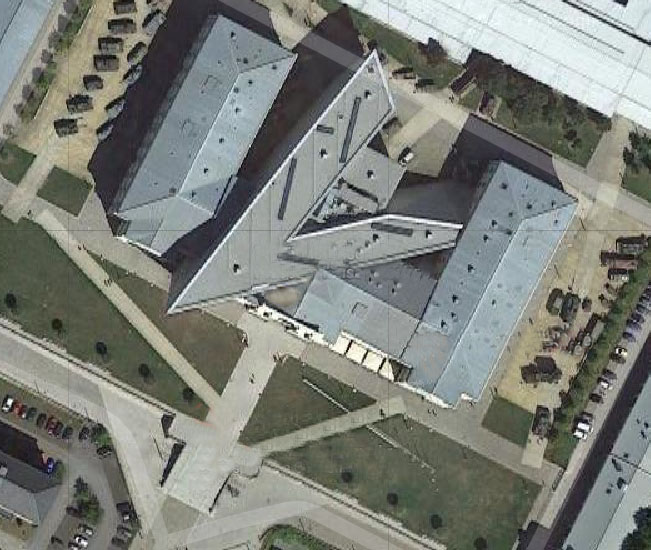 |
Aerial view from Google mapsThe Military History Museum of the Bundeswehr (the German Armed Forces) is a major museum of military history in Germany. The reopening of this museum was problematic, indicated by the altering of titles and focus over the years. Located in a former military arsenal in the Albertstad it had been used as a military museum under the Nazis and later under the communist SED party. But it was reopened in 2011 still showing German military technology, though not a glorification of weapons, and focusing on the human aspects of war. As Maximilian Popp explains, "Up to now, most military museums -- like the Imperial War Museum in London and the Musée de l'Armée in Paris -- have been more akin to an homage to warfare than places for reflection. They present weapons, shining machinery and pressed uniforms, celebrate great battles, and recall the heroic deeds of brave soldiers patriotically fighting against the odds and often enough sacrificing their lives for their country. The new military museum in Dresden wants to do away with this tradition. Although there will also be plenty of guns and cannons on display, and the chronology of military campaigns will be recounted, the historians have a far loftier goal in mind. They want to examine the topic of violence from the perspective of cultural history" (Der Spiegel online). Libeskind's addition, the dramatic wedge cutting through the older structure, and remodeling has a symbolic meaning. He says "It was not my intention to preserve the museum’s facade and just add an invisible extension in the back. I wanted to create a bold interruption, a fundamental dislocation, to penetrate the historic arsenal and create a new experience. The architecture will engage the public in the deepest issue of how organized violence and how military history and the fate of the city are intertwined." This interruption, open and transparent, in the classical symmetry of the older building is also a means of indicating that the new German history is slicing through the authoritarian past.The wedge slices through the building and the facade is dramatically altered with the five-story arrowhead of glass. | |
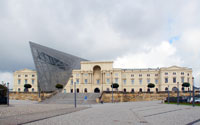 |
 |
The interrupted neo-classical facadeThe original building, an armory, was built between 1873-1876 and became a museum in 1897. |
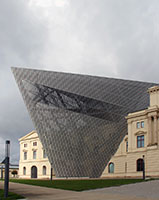 |
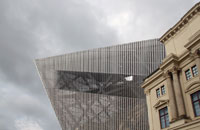 |
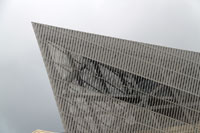 |
The renovated entrance and reception area | ||
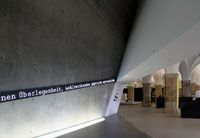 |
 |
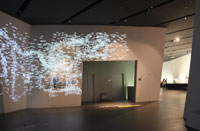 |
Hallways and galleries in Libeskind's signature style; as was said of Borromini, he abhors right angles!See also Libeskind's enormous Jewish Museum in Berlin and his addition to the Royal Ontario Museum, the Michael Lee-Chin Crystal. | ||
 |
 |
 |
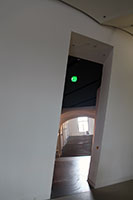 |
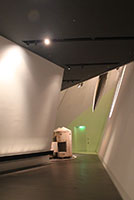 |
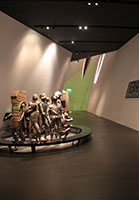 |
 Click here to return to index of art historical sites.
Click here to return to index of art historical sites.
 Click here to return to index of artists and architects.
Click here to return to index of artists and architects.
 Click here to return to chronological index.
Click here to return to chronological index.
 Click here to see the home page of Bluffton University.
Click here to see the home page of Bluffton University.

